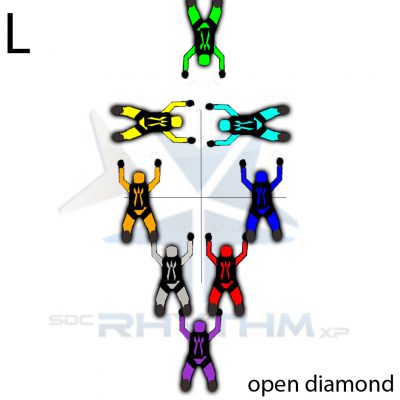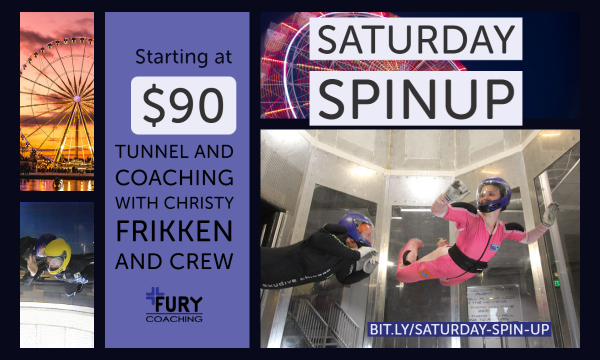8-way Basics: Why Outface When You Can Inface
Thursday, June 27, 2019

Great builds happen from the center out. Building the center takes a little time, and that sometimes leaves the outside flyers hanging in their slots. This is not a bad thing; it allows the individuals to continue looking through the middle and matching fall rate while the formation comes together.
This is a short series of articles that will help you break down and understand how 8-ways are built. While focusing on the formations in the competition pool, the tools shown here are highly transferable to general formation skydiving.
8-way Basics: Finding your slot
8-way Basics: Finding your clone
8-way Basics: Finding the centers
8-way Basics: Build the center first
8-way Basics: In-facing strategy
8-way Basics: Staged setups
8-way Basics: Round formations
8-way Basics: Fall rate
8-way Basics: Shared keying
8-way Basics: Line between point and tail
8-way Basics: Block inters
Facing Away Can Be Lonely
However, sometimes the outside flyers are required to be sideways to the formation (as in a compressed) or even facing away from the middle. It is possible to stay outfaced on a formation without grips, see behind to your clone, and make fall rate/angle adjustments. Possible, but extremely difficult! In fact, the challenge makes me a bit nervous thinking about it, and I am a coach.
Facing Inwards Is Smart
The smarter approach is for these outside flyers to stay facing inwards towards the formation as it builds. When the formation is ready and inviting, they can complete their movement to the final shape. By looking inwards until it is ready makes an audaciously demanding task very simple. With the right amount of patience, even beginner teams can master the toughest formations in the dive pool.
For our example, let’s look at the Open Diamond (L).

The Point (green), Front Center (yellow) and Inside Front (cyan) all are facing out in the completed formation. As a strategy to build the Open Diamond, the rest of the flyers should set up focusing on the Inside Center (blue) and Outside Center (orange). The outfacing three should wait either completely faced in, or 90 degrees to the formation (depending on experience level).

When the setup is gripped and solid, the Front Center and Inside Front should outface while the Point continues to look inwards. When this next phase of the formation is complete, the Point will then outface, in effect ‘topping the cake’.

Using this strategy as much as possible makes the difficult formations much easier to complete. It also helps teams learn the correct shape more effectively since they have the opportunity to look more clearly at each formation as it builds.
Eventually, if a team practices together these intermediate steps become shorter and may eventually disappear altogether. However this takes a lot of time and skill, and most teams choose to take these steps right into the competition and score highly with this predictable plan.
Tags: 8way



